Bogota is the sixth capital city that we have visited on our trip around South America, and so far it has proven to be the most difficult to enter, get around in, and to leave. One of the reasons for this, as far as I can see, is that Bogota is not a tourist-friendly city. I don’t mean to say that it is unfriendly, but it is not particularly an easy city for a traveller to get around. Especially one that has limited Spanish (something that I intend to rectify in time for my next visit to South America).
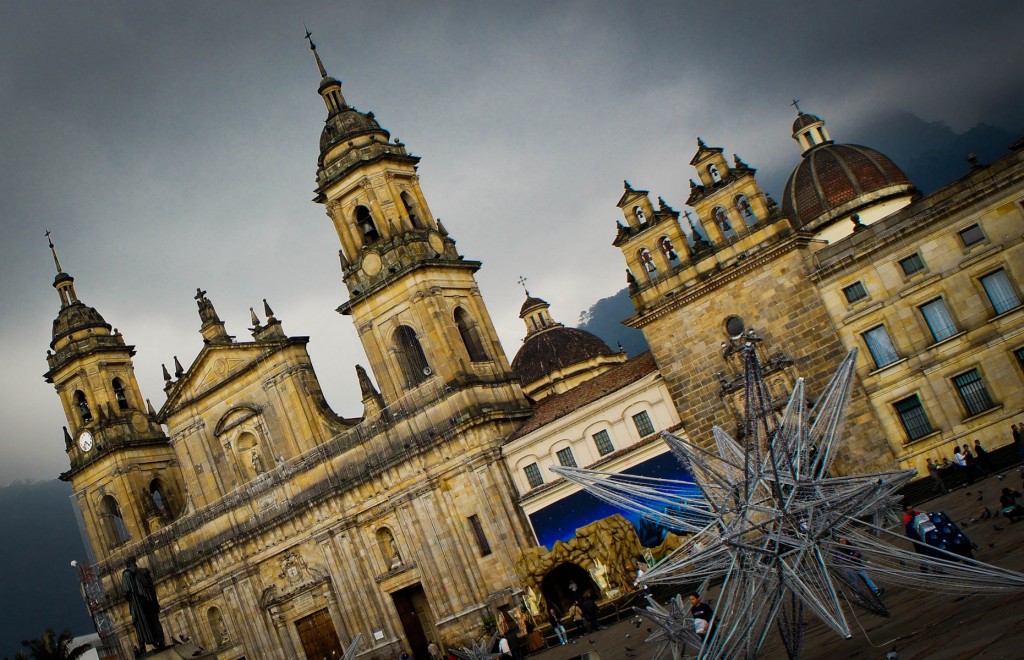
Let me begin by stating that I have really enjoyed my time in Bogota. I was lucky enough to spend a week with friends in their stylish apartment in the far north of the city; during this time I experienced the life of a Bogota resident and I have to admit that I found expat life in Colombia very appealing. The city has excellent shopping malls, great bars, fun nightlife, and the best restaurants we have encountered since Argentina. Unlike Peru and Chile, Colombian food is tasty, appetising and filling. Damn, the Colombians even know how to make a good pizza! There are some surprisingly quaint areas in Bogota, such as Centro Comercial Santa Barbara and the trendy bars and restaurants of Usuquen, where we enjoyed killer cocktails at Kathmandu and a lively Mexican meal at Mi Calle Mexico.

We also made a night-time pilgrimage up to Cerro Monserrate using the Teleferico cable car: the mountain offers great panoramic views of the city but as it was getting dark and shrouded in thick cloud we had to make do with the enchanting neon Christmas lights around the church at the top. Unfortunately only moments after reaching the top of the mountain the heavens opened and we were treated to the mother of all storms, but the lashing rain held off the crowds and I managed to take some great photographs.
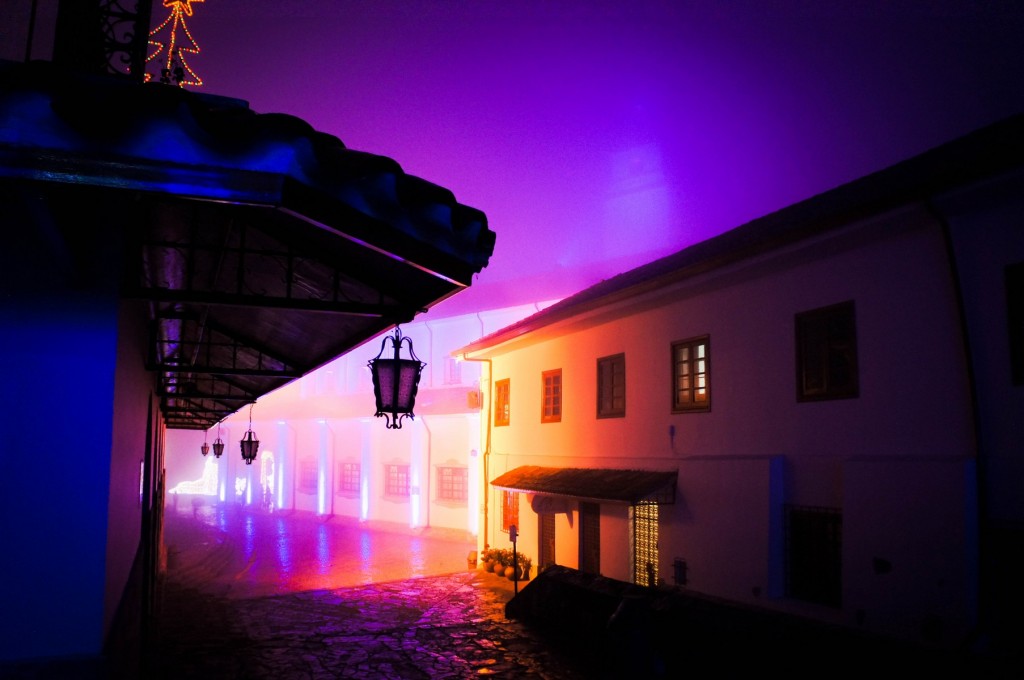
When we got down to the bottom of the mountain we discovered Bogota’s biggest drawback.
Taxi drivers will not pick anybody up when it rains. And it rains pretty much every day.
Our apartment was almost 20 kilometres away and there was nothing we could do to get a taxi. With limited Spanish, and no knowledge of the bus system, we were pretty stuck. We were also out after dark in notoriously dangerous streets. Fortunately—thanks to pure luck—we managed to find a Colombian girl who was hosting a friend from the US; they helped us take a bus to Usuquen where we waited out the rain in a restaurant before taking a taxi home hours later, when the storm finally abated enough for taxi drivers to resume their duties. We had planned to meet people at the cable car; they didn’t turn up because no taxi would pick them up in the city centre.
The taxi drivers in Bogota are a nuisance. It is hard to get a taxi if there are more than two of you; if it’s raining (even just a little) you can forget it. Most annoying are the taxi drivers who actually stop for you, ask you where you want to go and then refuse to take you.
Taxis from the airport and bus station can be particularly difficult. On our arrival from the airport the taxi driver charged us 50,000 pesos, during the rest of the week we did the same journey and longer but never managed to get higher than 20,000 on the meter. At the bus station they asked for a flat fee of 20,000 so we walked to a nearby road and flagged one down: after a few refusals we made it to our destination for 9,000. It is true that negotiating taxis can be problematic when travelling but I have to say that I have found the ones in Bogota to be more infuriating than anywhere else in the world!
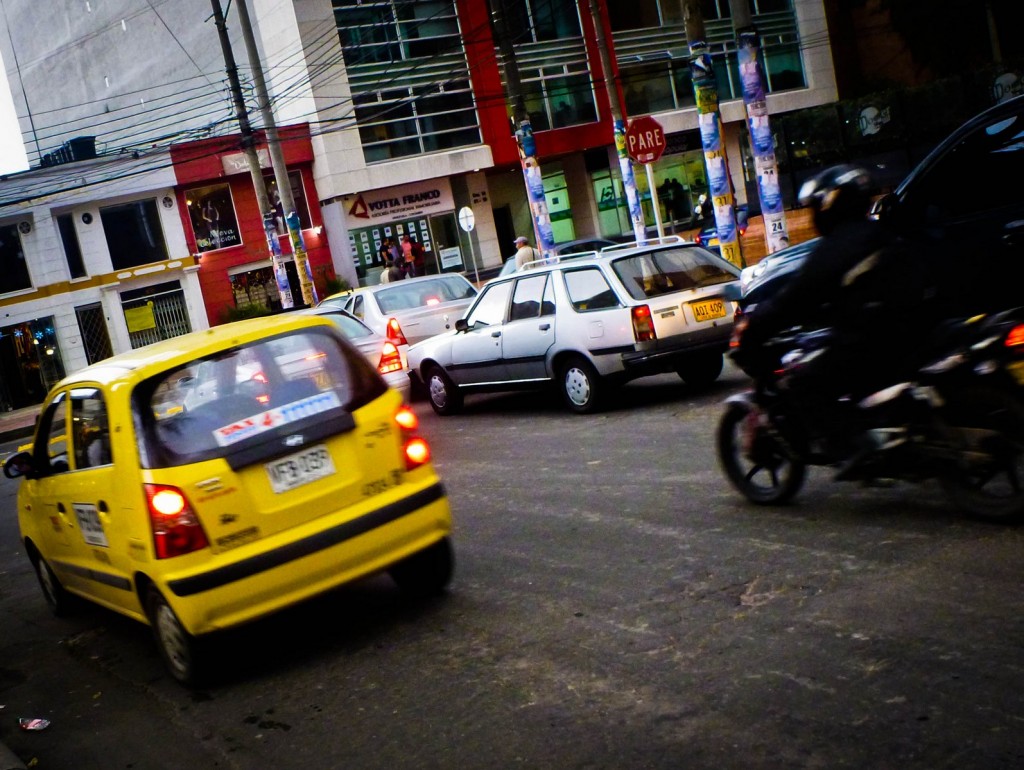
Backpackers need to be prepared for Bogota. Unlike the other capitals that we have visited on this trip, we have found Bogota very difficult to negotiate.
- Entering the airport we struggled because we did not have the address of our accommodation (our friends had arranged a taxi pick-up for us). This is something that will affect anybody arriving in the country without pre-booked accommodation, as many backpackers do. We were questioned by a number of officials and almost denied entry. We even found it difficult to change our Peruvian soles at the airport cambio without an address. Sure, we managed it in the end but it took us about 2 hours to get through the airport and was very stressful. When you are used to travelling from one country to another without pre-booking accommodation, this is an unexpected inconvenience. If you are visiting Colombia write down the address of your accommodation. In hindsight, it would have been better for us to have written down any hostel address from the guide book.
- Leaving the city was just as problematic as arriving. The bus terminal is a long way from the City Centre and we were told that we could either book our bus online or do it the Colombian way and buy the ticket from the bus station on the day you want to leave. Some travel websites informed us that you can’t book your ticket in advance at the bus station. We tried to book online but after a lengthy booking procedure both of our cards were refused and so we tried Plan B: turning up at the bus station. After bidding goodbye to our friends and travelling for an hour in a taxi, we arrived at the bus station and were told that all the buses to Medellin were full for the whole day. We managed to pre-book tickets for the following day and so we left our large backpacks in storage at the bus station and headed into town to find a hostel for the night.
Bogota is an interesting city to visit but just needs a bit more preparation than other places in South America. Unlike Cusco or La Paz, there are not hundreds of tourist offices ready to help you out with booking buses. And unlike Buenos Aires or Santiago, there is not a cheap, reliable and easily navigable metro system, you have to use taxis unless your spanish is good enough to take on the crazy buses.
Will we manage to leave Bogota successfully in the morning? If it’s not raining we might just get a taxi driver to take us to the bus station…
Have you had any bad taxi experiences either travelling or at home? Which country or city have you found the most difficult to travel around in? Tell me about it in the comments.

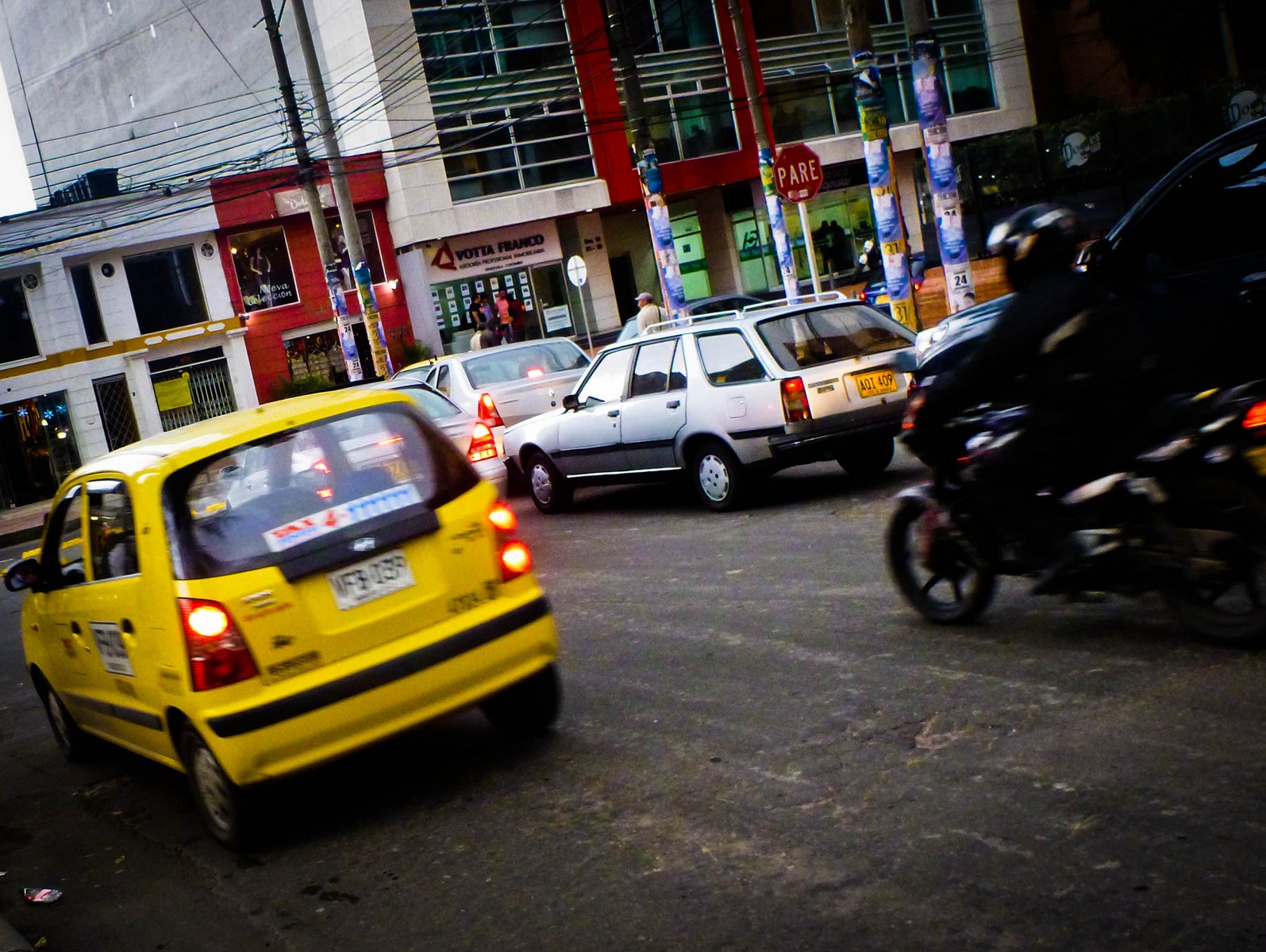
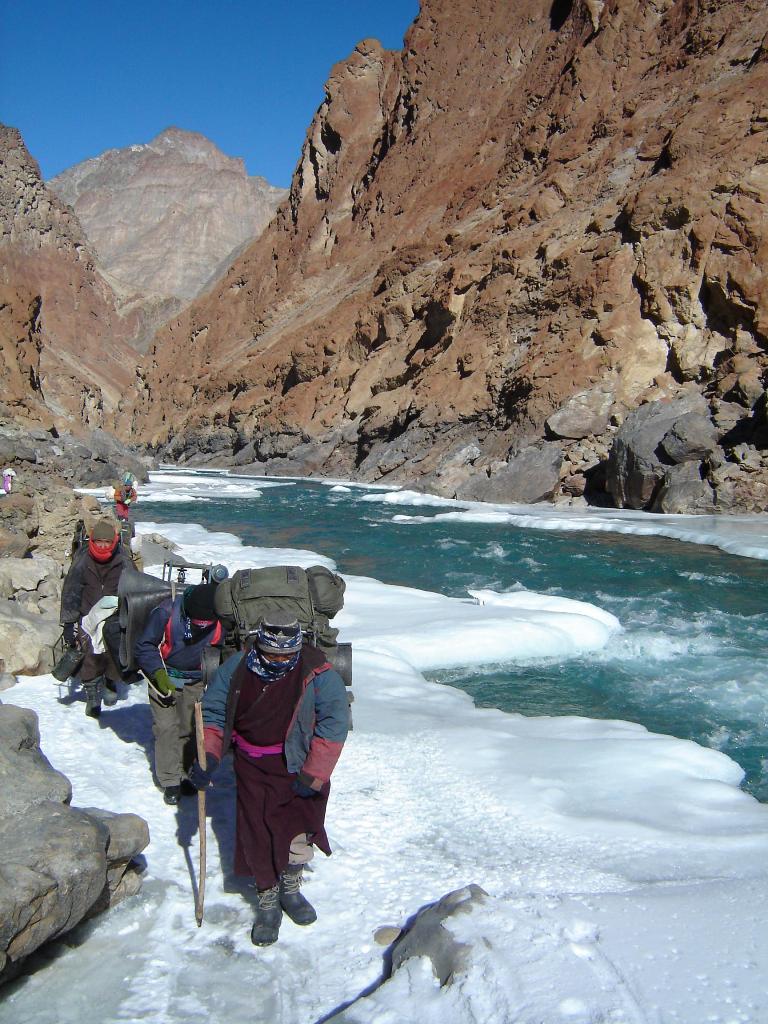
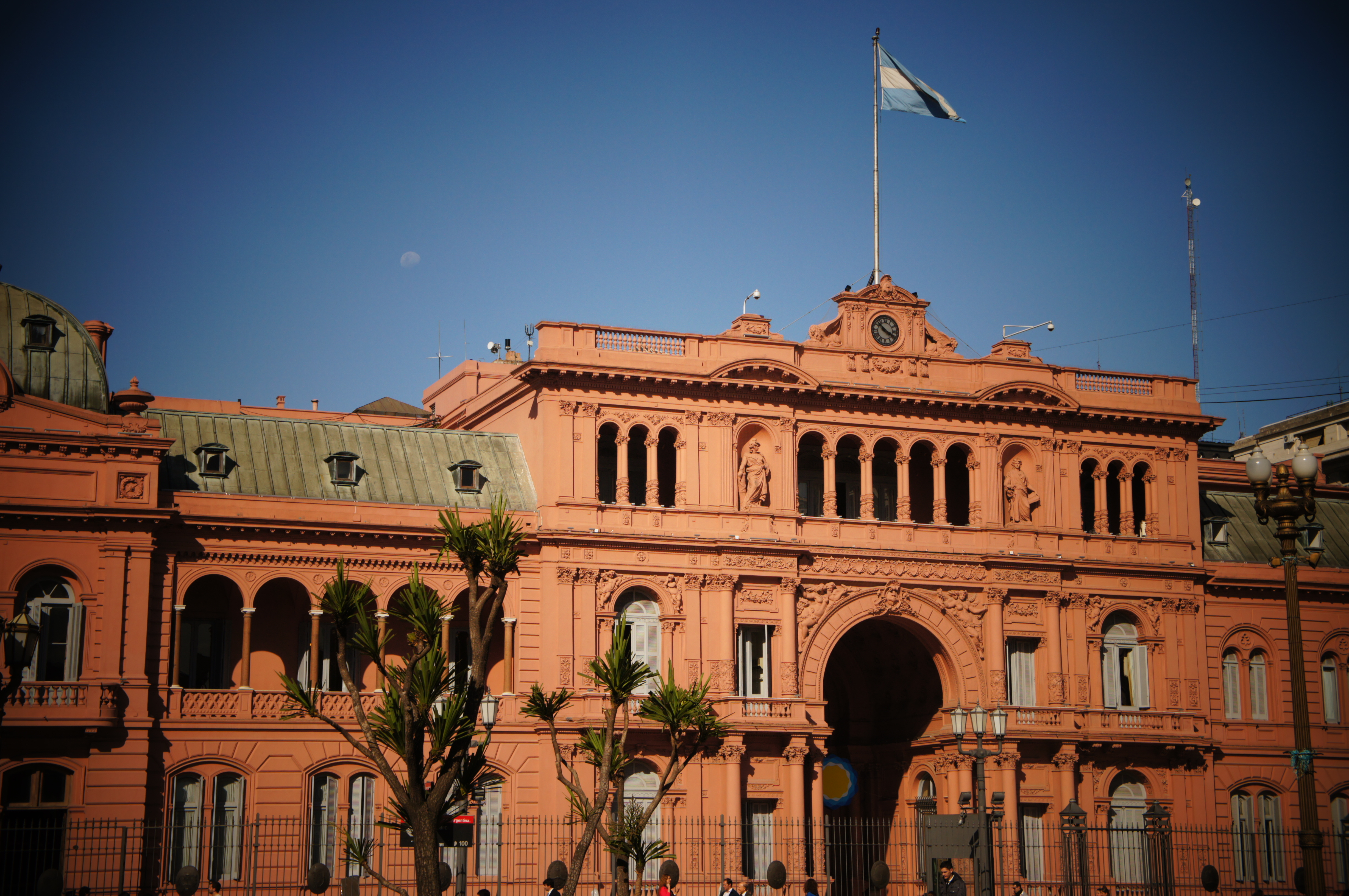

Having lived in so many places during my life I found the most difficult to get around in are places that are English speaking but their transportation and/or infrastructure systems don’t make sense until studied in detail or over months.
I often find it easier when I don’t speak the language – guess it creates an environment where I need to use puzzle skills more than language.
Love this post on Bogota and my favorite photo – Christmas decorations, Usaquen.
Maria recently posted..When a Stranger Calls
Hey Elaine,
Great site! Keep it up,
Let us know if you ever feel like doing some pro-bono writing work. We’re always looking for new writers.
http://www.thisboundlessworld.com
Thanks!
D
Thank you for the comment! I’ll have a look at your website now
Again, hunting through your old South America entries but they’re full of lots of useful tips. I’ll definitely have the address for my hostel (a year from now…what can I say, I like to plan ahead, lol!). Did you have to show proof of onward travel too?
Kristine recently posted..Unconventional ways to save $$ for traveling
I’ve been living in bogota for 12 months now, and will be here for another 12 at least.
I have to say I agree with you – Bogota is not a particularly touristy city…that has its advantages and disadvantages. I frequently see small groups of tourists walking around the streets near my house, lost, unsure of what to do….hyperalert in case they might be approached or ripped off or misled in some way.
But things are changing. At the moment, to really get to know bogota as tourist you need 3 things: time, Spanish and a sense of adventure…or at least curiosity. This is a city that is longing to be an international destination, there are frequent developments in the tourist industry, and plans for the city to be connected by free wifi network in the coming year.
I recently returned from a holiday, landing at the new terminal to be greeted by a row of attendants who all spoke english to direct incoming passengers to the correct carrousel, and a row of immigration desks that were fully staffed.
I have never seen a city that is so willing to invest in the arts and its own human capital – Bogota is home to the 3rd largest open air festival in the world…..and it is totally free (it forms the part of a concerts in the park series that show cases not only rock, but punk, salsa, opera, hip hop and classical music too).
The street art scene is alive and kicking – there is a social acceptance towards artists and street art that you would never find in a developed city….somehow people have respect for artists as professionals and they value their contributions to the way street arts is transforming the vibe and facade of the city.
It is very easy to get ripped off…systems seem to work and there is often no way of finding out how the taxis work, or the buses work unless you can have someone explain it to you. And having lived with the frustrations of working in Colombia for a year now, I know how complicated and convoluted things can be here….so if you’re coming to bogota without doing a little research, life is going to be just that little bit tougher when you get here. I totally agree.
But on the flip side, if you do your homework, and you give yourself time and space to really explore….it’s actually not such a bad place to be.
The Hairy Chef recently posted..What de Botton’s 10 commandments mean to me, and might mean to you
so FYI….if you’re catching taxis in bogota the taxi meter will display a number…that is NOT your taxi fare.
At the end of the trip the drive MUST press a button on the side of the meter and is will say “paga…..” and then a price in pesos. Insist of the meter being used and if they refuse get out and look for another one.
Taxis from the bus terminal register at the taxi rank at the bus station. They too MUST use a meter. Never get in a cab if the driver wants to settle the price before you start the trip, and the drivers may only add a small extra to the price on Sundays, public holidays and after 8pm. Even then its only a small amount, maybe 3000 pesos at most.
They are obliged to give you the full change if you ask for it….and after you insist…they usually do….
but believe me…it took me a long time to figure all that out. Its like Colombians are born with a working knowledge of a system that has no rules.
The Hairy Chef recently posted..What de Botton’s 10 commandments mean to me, and might mean to you